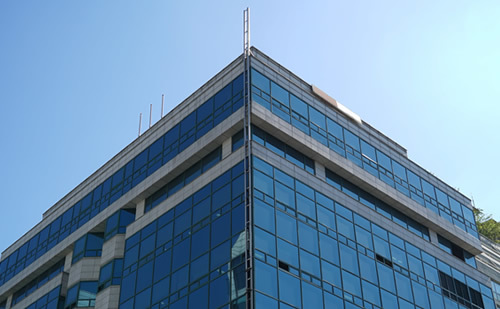The Art and Science of Building Facades
Jan 22,2025

In architecture, a building’s facade is much more than just its exterior face—it’s the personality of the structure, the interface between the interior and the world outside, and a key factor in its functionality and sustainability. Whether it’s a sleek glass skyscraper, a historic stone building, or a modern mixed-material design, facades play a vital role in shaping how buildings are perceived and perform.
What Is a Building Facade?
A facade is the outermost part of a building, often the front, but it can refer to any external face. It serves both aesthetic and practical purposes. Facades are not only the "skin" of the building, defining its visual identity, but also a critical layer for energy efficiency, structural integrity, and environmental performance.
Types of Building Facades
1. Glass Facades
Popular in modern architecture, glass facades create a sense of openness and allow for natural light to flood the interior. They can be single, double, or triple-glazed for thermal insulation and often incorporate advanced technologies such as low-emissivity coatings.
2. Stone Facades
Stone has been used for centuries due to its durability and timeless appeal. Materials like limestone, granite, and sandstone give a building a classic, solid look and excellent weather resistance.
3. Metal Facades
Metals such as aluminum, steel, and copper are commonly used for their strength, versatility, and modern aesthetic. Metal panels can be perforated, textured, or finished in various colors to achieve unique designs.
4. Wooden Facades
Wood brings warmth and natural beauty to a building. Treated properly, it can last for decades while offering sustainability and charm.
5. Composite Facades
Combining two or more materials, composite facades offer the best of multiple worlds, balancing aesthetics, performance, and cost-effectiveness.
Functions of a Facade
1. Aesthetic Appeal
A building’s facade defines its architectural style and creates the first impression. Bold, innovative designs can make a statement, while subtle, elegant facades can evoke timeless beauty.
2. Environmental Performance
Modern facades often integrate energy-efficient technologies, such as solar panels, green walls, or shading devices. These features help regulate temperature, reduce energy consumption, and minimize environmental impact.
3. Structural Integrity
A facade provides critical protection from external elements like wind, rain, and sunlight, ensuring the building’s longevity and functionality.
4. Thermal and Acoustic Insulation
Well-designed facades help maintain a comfortable indoor environment by preventing heat loss or gain and reducing noise from outside.
Innovations in Facade Design
1. Dynamic Facades Dynamic or responsive facades use smart materials and technologies to adapt to changing environmental conditions. Examples include louvers that adjust to sunlight or glass that changes opacity.
2. Green Facades Incorporating vegetation, green facades improve air quality, reduce heat absorption, and add a biophilic element to urban settings.
3. 3D Printing Advancements in 3D printing have opened new possibilities for intricate and customizable facade designs, reducing material waste and construction time.
4. Sustainable Materials From recycled metals to engineered wood, architects are increasingly prioritizing sustainable materials for facade construction.
Challenges in Facade Design
Creating a facade involves balancing multiple factors—aesthetics, functionality, budget, and regulations. Designers must ensure that the facade complements the building’s purpose, adheres to local codes, and integrates seamlessly with the structural system. Additionally, maintenance is a key consideration, particularly for complex or highly decorative facades.
The Future of Building Facades
As architecture continues to evolve, facades will play a pivotal role in addressing global challenges such as climate change and urbanization. Innovations in materials, energy-efficient systems, and digital design tools are driving the next generation of facades, making them smarter, greener, and more adaptable.
Is Your Facade Ready for the Future?
Whether you're designing a new building or renovating an existing one, the facade is a critical element that deserves careful attention. At MODUCON, we specialize in creating facades that are as functional as they are beautiful. Contact us today to explore how we can transform your building’s exterior into a masterpiece.
PREVIOUS:
NEXT:
Contact Us
Tel:+86 24 8412 7160
Phone:+86 138 9881 8810
Email:info@moducon.cn
Website:
www.moducon.cn
www.thebuildhub.com
Post code:110035
Address:Building F1, Xinyuehui, No.9 Tawan Street, Huanggu District, Shenyang, P.R. China

